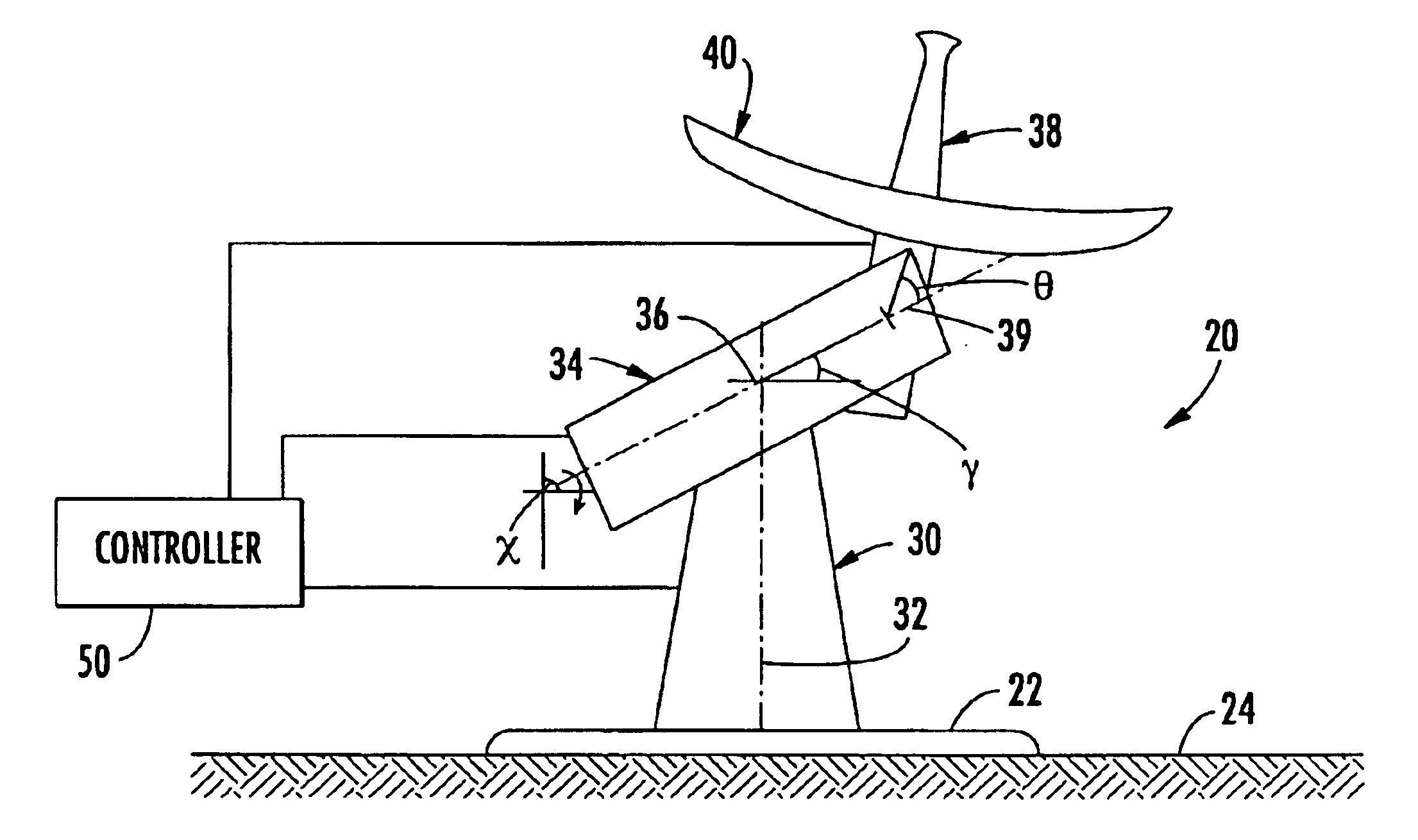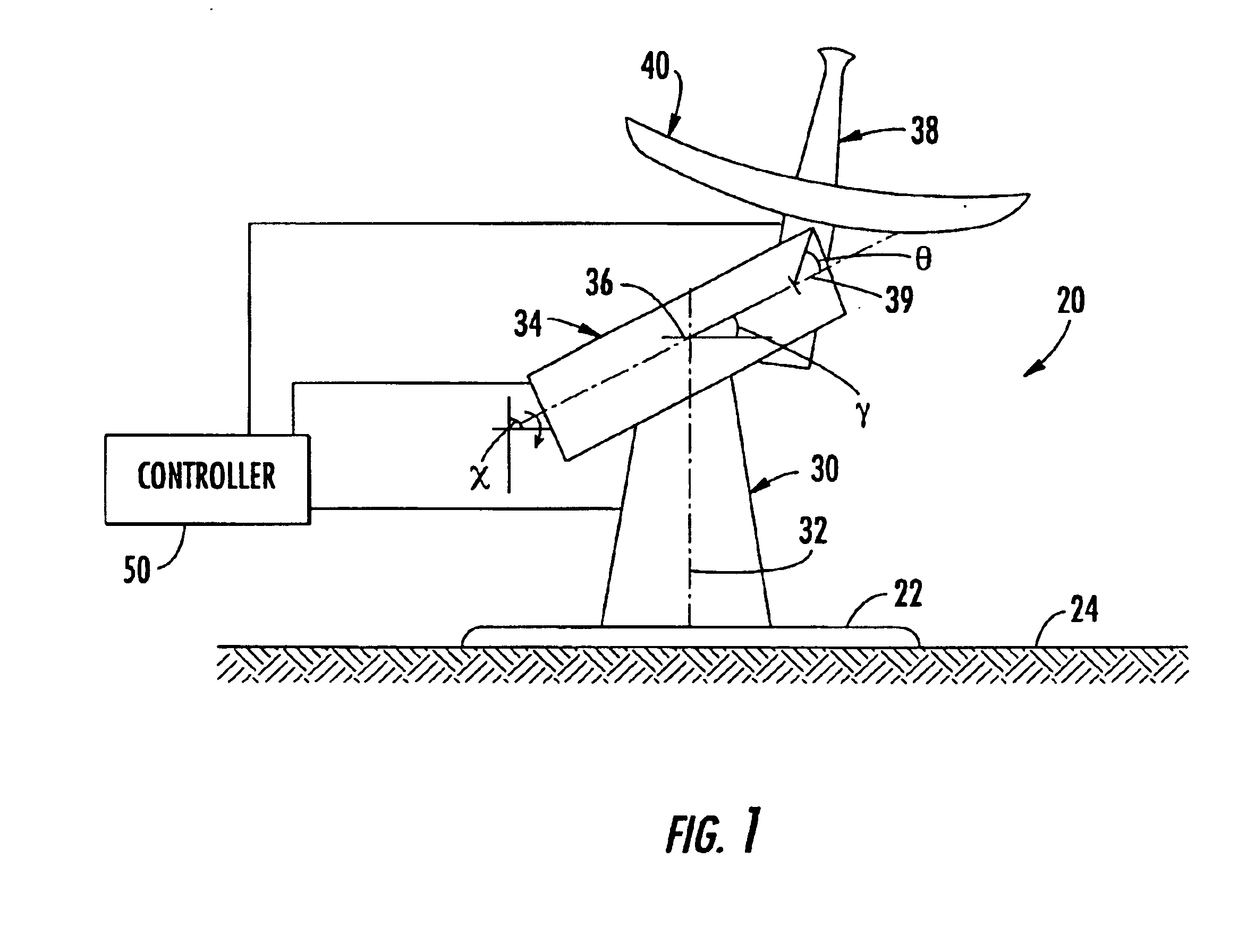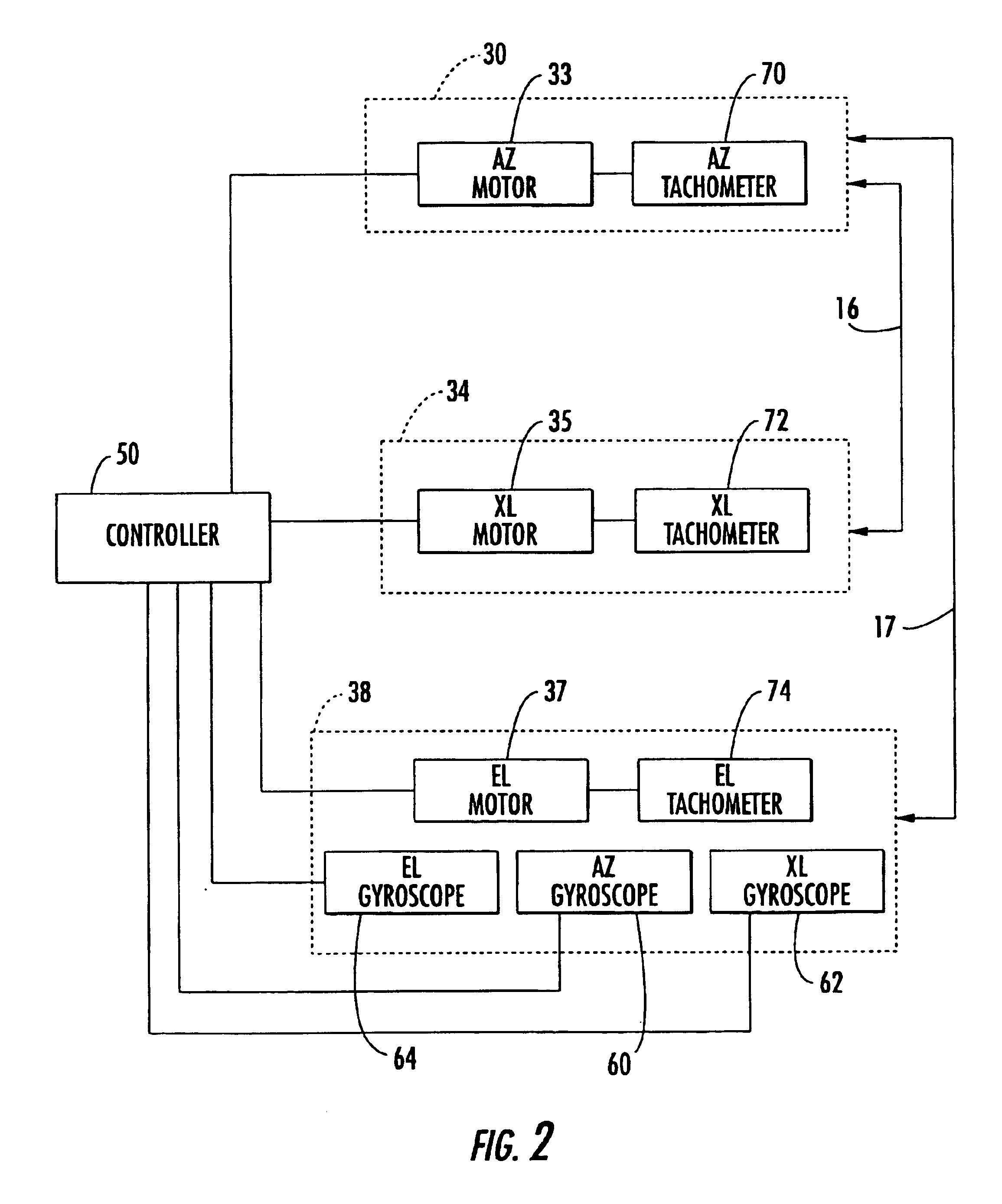Antenna assembly decoupling positioners and associated methods
a positioner and assembly technology, applied in the field of antennas, can solve the problems of increasing pointing errors, unfavorable movement of another positioner, increasing pointing errors, etc., and achieve the effect of accurate and reliable pointing of the antenna
- Summary
- Abstract
- Description
- Claims
- Application Information
AI Technical Summary
Benefits of technology
Problems solved by technology
Method used
Image
Examples
Embodiment Construction
The present invention will now be described more fully hereinafter with reference to the accompanying drawings, in which preferred embodiments of the invention are shown. This invention may, however, be embodied in many different forms and should not be construed as limited to the embodiments set forth herein. Rather, these embodiments are provided so that this disclosure will be thorough and complete, and will fully convey the scope of the invention to those skilled in the art. Like numbers refer to like elements throughout, and prime notations are used in the graphs to refer to modeled readings resulting after decoupling.
Referring initially to FIGS. 1-2, an antenna assembly 20 for operation on a moving platform 24 is now described. The antenna assembly 20 illustratively includes a base 22 mounted to a moving platform 24. The moving platform 24 may, for example, be a deck of a ship at sea, a buoy, a land vehicle traveling across terrain, or any other moving platform as understood b...
PUM
 Login to View More
Login to View More Abstract
Description
Claims
Application Information
 Login to View More
Login to View More - R&D
- Intellectual Property
- Life Sciences
- Materials
- Tech Scout
- Unparalleled Data Quality
- Higher Quality Content
- 60% Fewer Hallucinations
Browse by: Latest US Patents, China's latest patents, Technical Efficacy Thesaurus, Application Domain, Technology Topic, Popular Technical Reports.
© 2025 PatSnap. All rights reserved.Legal|Privacy policy|Modern Slavery Act Transparency Statement|Sitemap|About US| Contact US: help@patsnap.com



